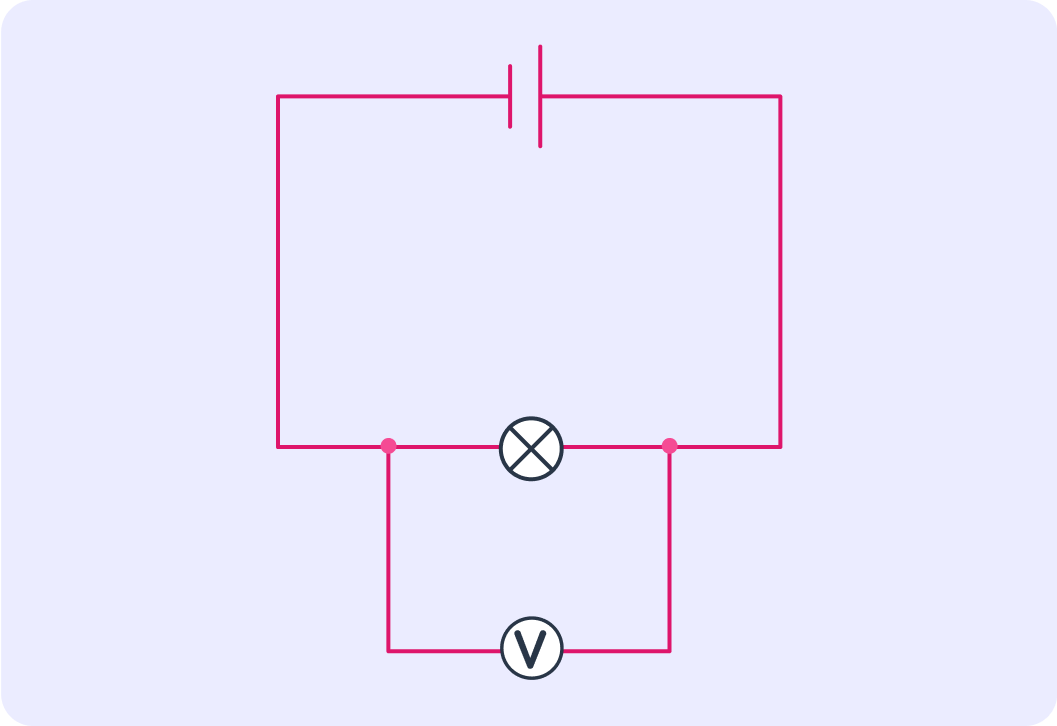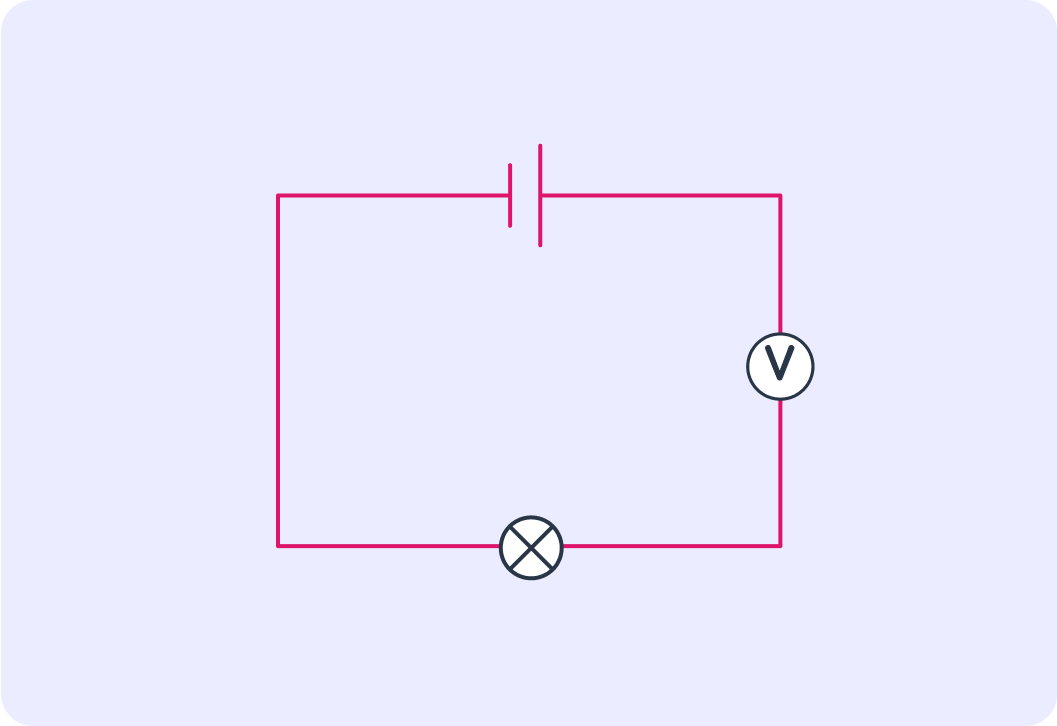YOU ARE LEARNING:
Measuring Potential Difference

Measuring Potential Difference
The unit for potential difference is volt (V) so we use a voltmeter connected in parallel to measure the potential difference across two points in a circuit.
Which of these is the correct unit for potential difference?

What do we use to measure the potential difference in a circuit?

Potential difference is measured in volts, using a voltmeter.
Have a look at the diagram. Which component has the highest potential difference across it?


Apart from the battery, what is the other component in this circuit?


What piece of equipment would we need to add to this circuit if we wanted to measure the potential difference across the bulb?


Now, do we connect a voltmeter in series or parallel to measure the voltage across a component?

If we look at the diagram we can see that the voltmeter is connected in parallel.
This allows us to measure the potential difference across the bulb. Remember, parallel is where you add another layer to the circuit rather than adding something before or after.

By contrast, this is what it would look like if we connected the voltmeter in series.
It would only allow us to measure the voltage at one point in the circuit. So that wouldn't give us the potential difference between the two points on either side of the bulb.

What is the advantage of using a digital voltmeter as opposed to an analogue one? Pick all the options you think are correct.

You can select multiple answers
